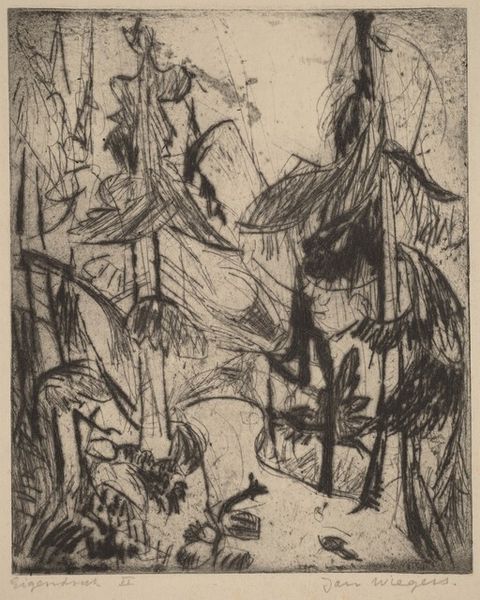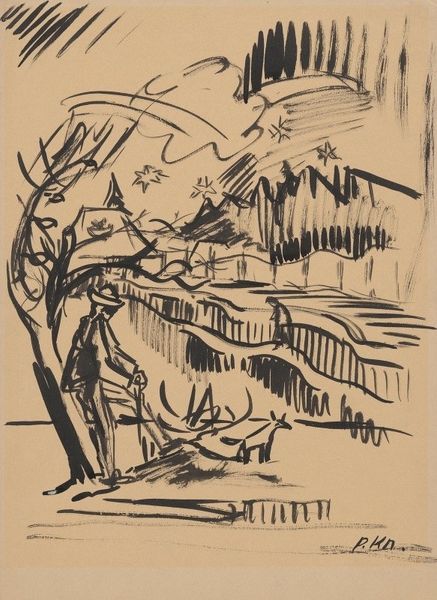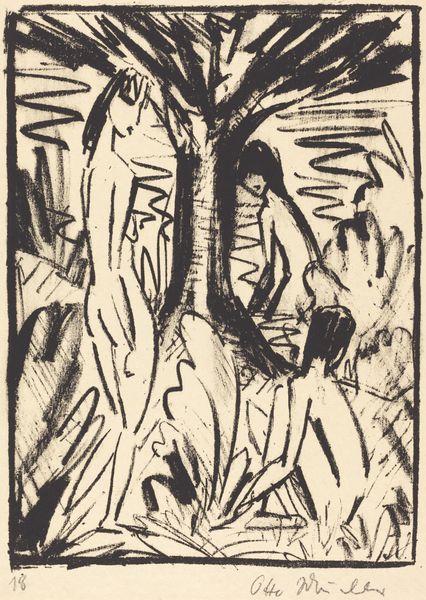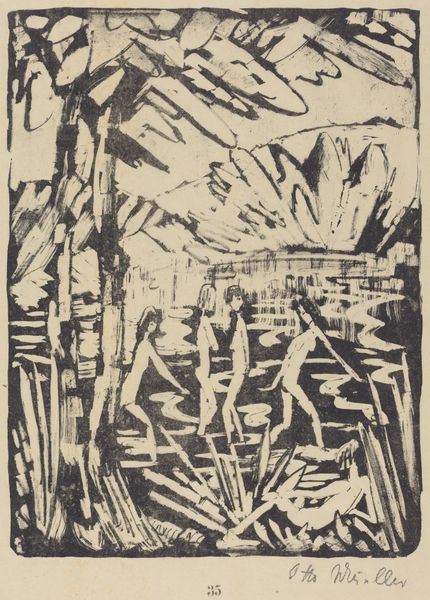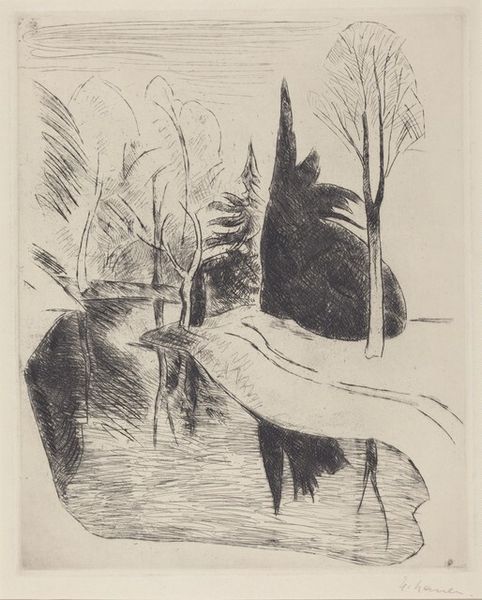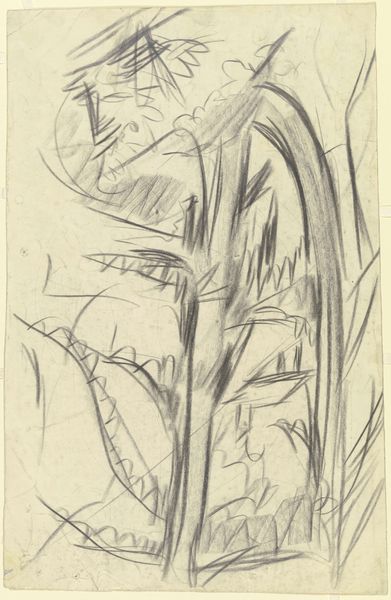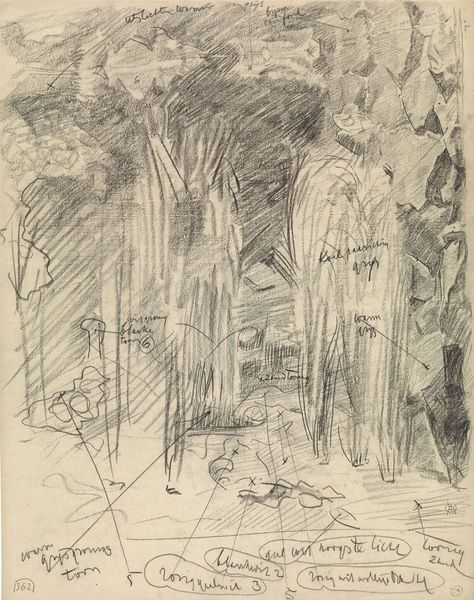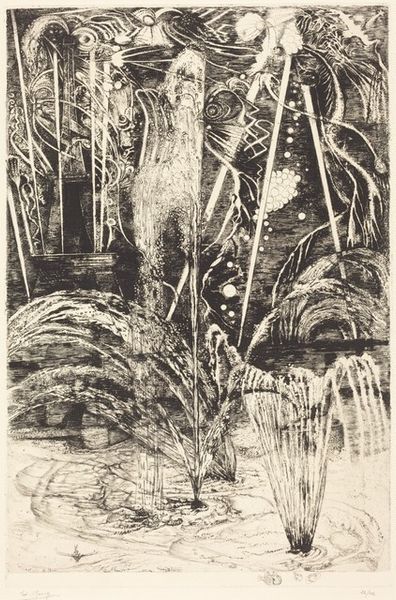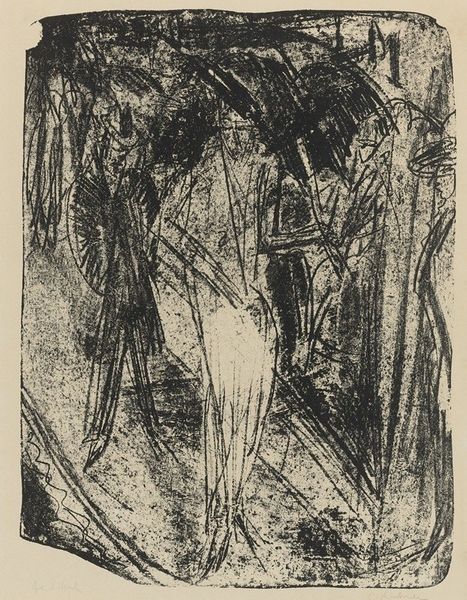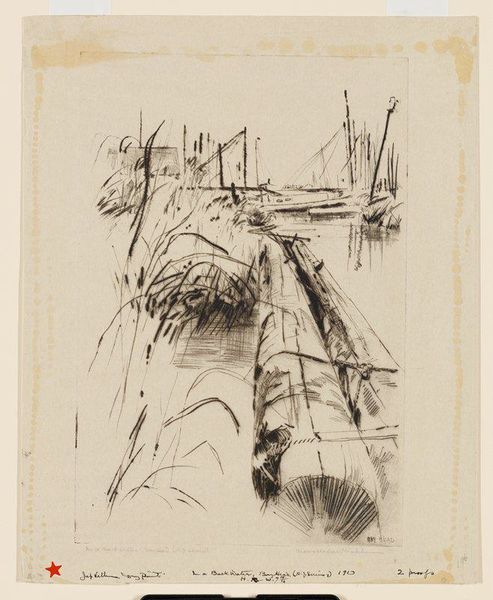
print, etching, ink
#
ink drawing
#
pen drawing
# print
#
etching
#
landscape
#
german-expressionism
#
ink
#
geometric
#
expressionism
#
line
Dimensions: plate: 25 x 19.7 cm (9 13/16 x 7 3/4 in.) sheet: 40.2 x 31.6 cm (15 13/16 x 12 7/16 in.)
Copyright: National Gallery of Art: CC0 1.0
Curator: Editor: This is Erich Heckel’s “Lake in the Park,” from 1914. It's an etching, so it has this incredible textural quality. The whole image feels very angular and stark, almost unsettling. What strikes you about this piece? Curator: What immediately grabs my attention is Heckel’s material choices. Etching in 1914, during the burgeoning of Expressionism, places him at an interesting nexus. The *means* of production become significant. What social forces were at play influencing his selection of etching over, say, painting? Editor: So, the *how* he made it is more important than just *what* he made? Curator: Precisely. Consider the labor involved in etching, the acid-resist, the careful scratches on the plate, each contributing to the final product. This painstaking process, repeated for each print, highlights the artist's, and potentially the printer’s, investment in production. How does that influence your understanding? Editor: I hadn't really considered the printing process itself. It makes the image feel less spontaneous, even though it’s Expressionist. It suggests intention, labor... almost like a critique of idealized landscapes. Curator: Yes, the materiality confronts the notion of art as solely a product of genius. The roughness, the marks left by the tools, they reveal the human hand, the imperfections inherent in the making. Do you think the subject, a park, plays into this? Public spaces, access, who controls the means... Editor: Definitely. Thinking about it that way shifts the whole meaning. It's not just a landscape, it's a statement about process and control. I learned that Expressionism included a new set of making decisions that add layers to the context. Curator: Exactly. Seeing art through a materialist lens connects artistic choices to larger socio-economic forces, unveiling complex narratives within seemingly simple landscapes.
Comments
No comments
Be the first to comment and join the conversation on the ultimate creative platform.
